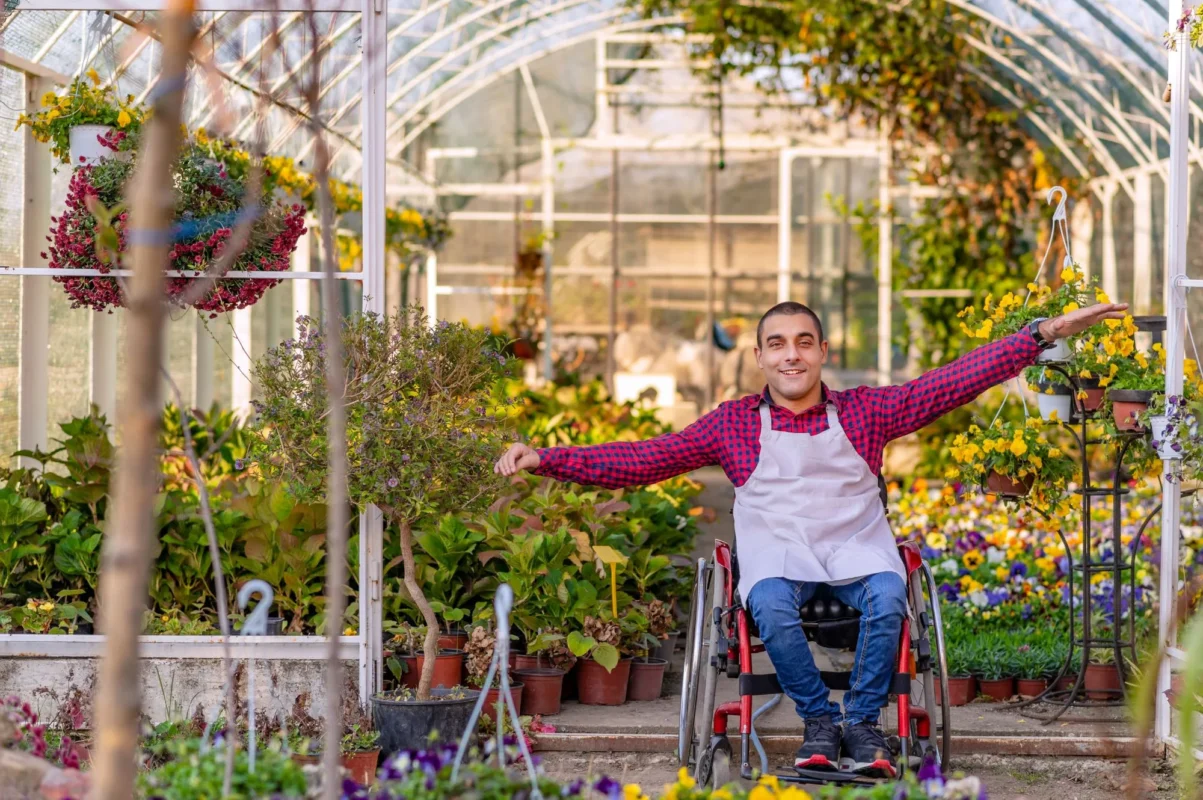The trees are green, the flowers have bloomed, and the pollen is in full force—welcome to spring! This season holds so many opportunities for outdoor activities, one of the most popular being gardening. Gardening is a wonderful way to enjoy the weather, relax, and create your own beautiful and fruitful space. However, for many individuals with disabilities, the physical work involved in gardening can be difficult, making this rewarding hobby seem inaccessible. If this is how you have viewed gardening in the past, good news! Like many outdoor activities, gardening can be accessible and enjoyable to individuals with disabilities. If you are interested in cultivating your own green space this spring, take a look at our top four tips for accessible gardening and examples of adaptive tools—
Use Raised Beds for Accessible Gardening
If one of your biggest concerns when gardening is the need to constantly be bending down or on your knees, using raised beds is a great option. A raised flower bed will allow you to stand while working, or if you use a wheelchair or other mobility device, keep the bed at chest height so you can access it with ease. This is an ideal solution fo many individuals with mobility impairments, injuries, arthritis, and other conditions that inhibit your ability to bend down or be on the ground for long periods of time.
mobility device, keep the bed at chest height so you can access it with ease. This is an ideal solution fo many individuals with mobility impairments, injuries, arthritis, and other conditions that inhibit your ability to bend down or be on the ground for long periods of time.
Try Self-Watering Techniques
Keeping your plants nice and healthy through watering is essential in gardening, but this task can require a lot of labor. Whether your garden needs you to haul over a hose or carry a heavy watering can, it can be a difficult step for individuals with disabilities. One of the best ways to make watering your plants easier is to use self-watering techniques. These can take a number of forms, including implementing a drainage put in your flower bed so water seeps in over time, using products like self-watering globes, and even getting sprinklers installed if you think it would help. You can also DIY your own self-watering systems using items found around your home. These self-watering techniques can help reduce the stress and work it takes to maintain your garden, making sure it stays a relaxing and rewarding experience.
Work With Long-Handled and Adapted Tools
Much like everyday-use tools like utensils and writing implements, gardening tools can be made with adaptations to make them more suited to your needs as an individual with a disability. If you need tools that will help you reach down, long-handled options are always available and can eliminate the stress on the body it may cause. If you need to be sure your tools will be comfortable in your hands and easy to handle, adaptive grips, like those on adapted utensils, are a great option, and can help your work go more smoothly.
Use Mobility Aids and Adaptive Seating as Needed
Gardening often consists of moving back and forth and spending long periods of time on the ground or at odd angles, which can become extremely uncomfortable for those with physical disabilities. Taking care of your garden should never be something painful for you. A great way to make sure you stay comfortable when gardening is to use seating options and/or mobility aids that work for your specific needs. If it is the moving back and forth through your gardening containers that troubles you, using a rolling stool or easily movable seat can eliminate this discomfort and keep you working smoothly without interruptions. If working in one place or at a strange angle is your concern, using specialized stands, supports, or props for your legs, back, and/or arms is a great option. Gardening takes work, but it should never be hard labor.
Gardening is a wonderful way to relax, enjoy the beautiful weather, and cultivate your own green space this spring. These tools and tips are just one example of how so many seasonal activities, whether they be sports, trips, work around the house, or anything else you may be interested in, can be made accessible to you and others with disabilities. This season’s opportunities belong to you, and we are here to help you actualize them through providing advice, resources, and support. For more tips, tools, and information on living well with disabilities, check out our monthly blog here. If you are looking for resources to help expand your knowledge and community, feel free to access our extensive resources page here. Happy spring!

